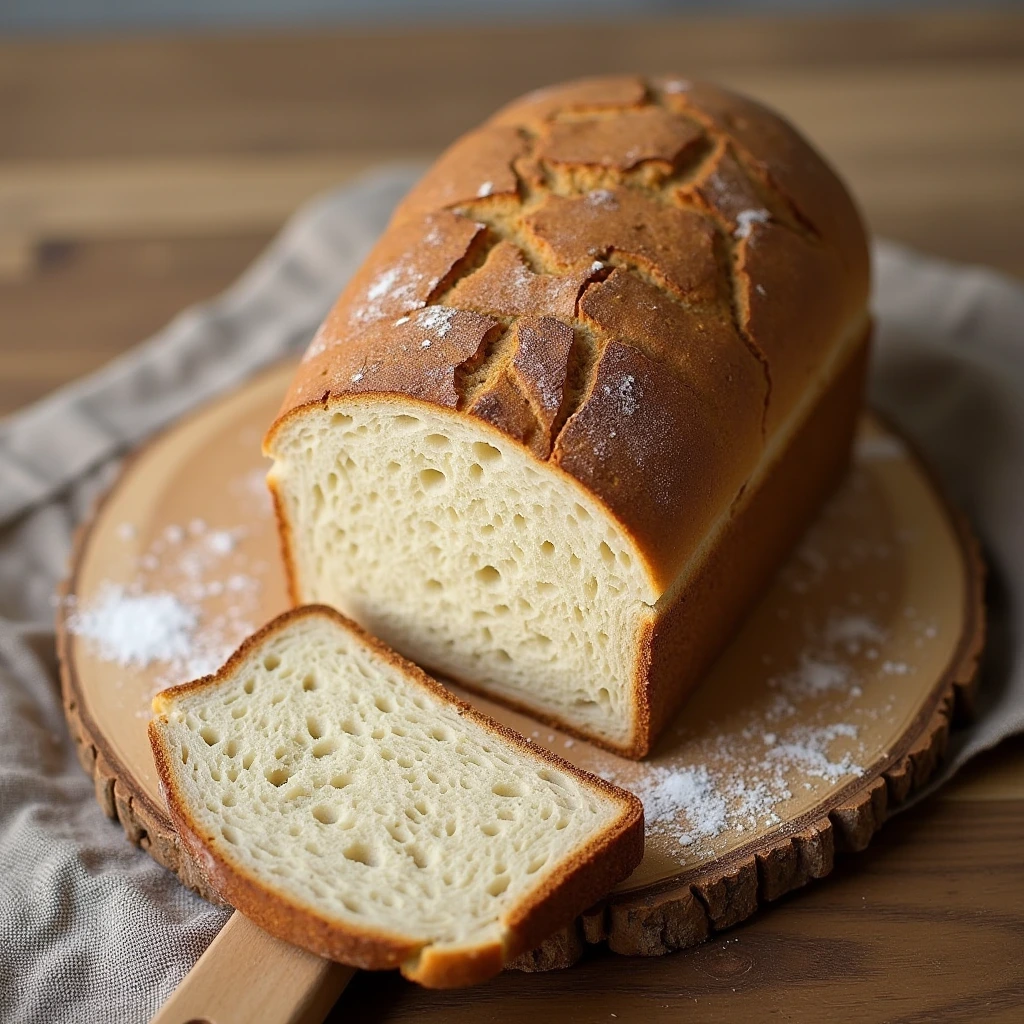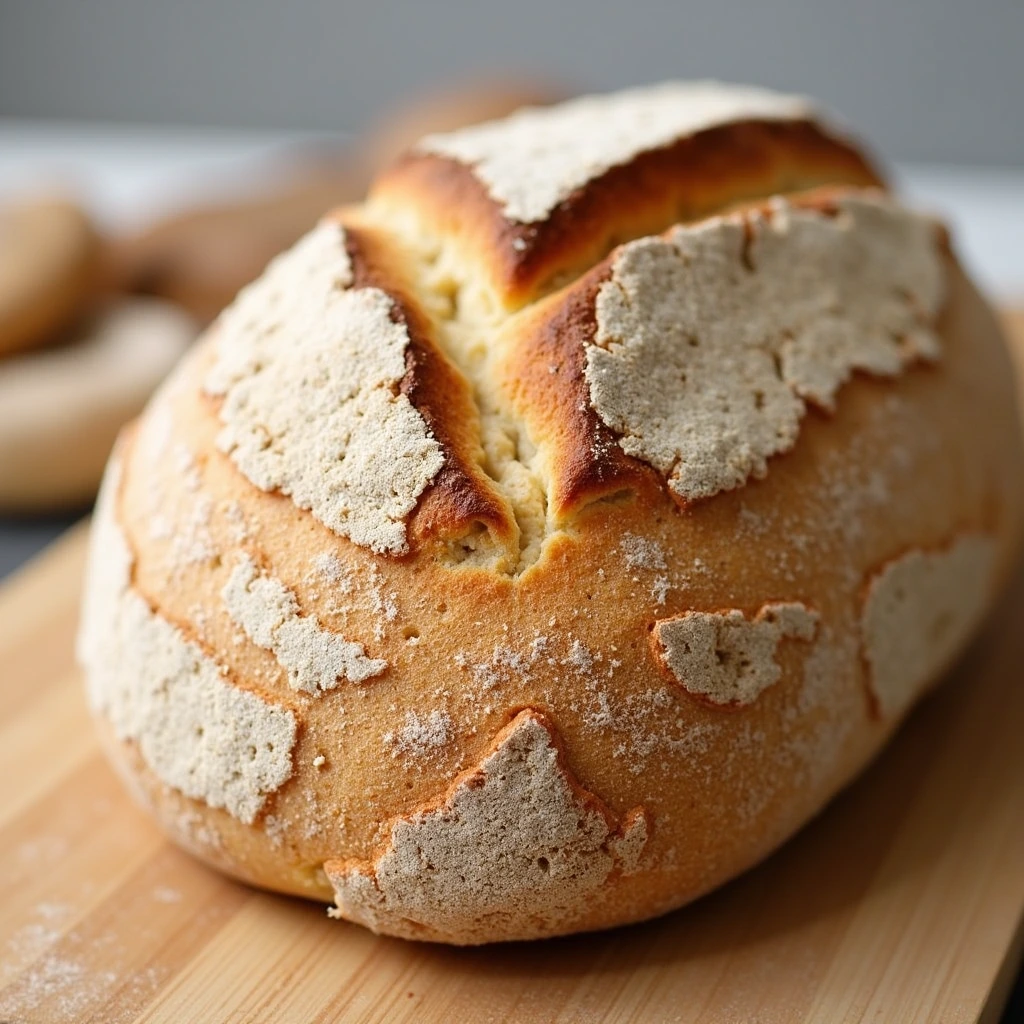Delicious Gluten-Free Sourdough Bread: The Science Behind Perfecting Your Loaf
Table of Contents
Have you ever wondered why gluten-free sourdough bread has such a distinctive flavor and texture compared to its gluten-filled counterpart? Maybe you’ve tried to bake it yourself, only to find that the dough behaves differently than you expected. If you’ve been curious about the magic behind gluten-free sourdough, you’re not alone. The art and science behind this popular bread are both fascinating and complex, and understanding how it works can not only help you bake better bread but also appreciate the nuances of each loaf you create. In this article, we will explore the science behind gluten-Glutenless Sourdough Bread, uncovering how it rises, why it tastes the way it does, and how to perfect your homemade version.
What Makes Sourdough Gluten-Free?
Understanding the Key Ingredients and Their Roles
When it comes to gluten-free sourdough, it’s crucial to understand that the lack of gluten—an essential protein in traditional bread-making—plays a significant role in how the dough behaves and how the final product tastes. Let’s break down the ingredients that make gluten-free sourdough possible and how each of them contributes to the process.
Gluten-Free Flours
To start, you’ll need a base flour that’s free of gluten. Some of the most commonly used gluten-free flours in sourdough baking include:
- Rice Flour: Light and versatile, it’s often used as a foundation in gluten-free sourdough recipes.
- Almond Flour: Adds moisture and a slightly nutty flavor that enhances the overall taste of the bread.
- Potato Starch: Often used in combination with other flours to improve texture and moisture retention.
- Tapioca Flour: Known for its ability to mimic the chewy texture gluten would provide in traditional bread.
These gluten-free flours do not behave the same as wheat flour. They lack the network-forming properties that gluten provides in regular bread. Instead, they require a bit more attention when mixing and proofing, as they don’t have the same elasticity and structure that wheat flour naturally develops.
Sourdough Starter
A key feature of Fermented Bread is the use of a sourdough starter, which is a mix of flour, water, and wild yeast that ferments over time. For gluten-free sourdough, the starter is made with gluten-free flours and water. Over time, wild yeasts and lactic acid bacteria from the environment or the flour itself will colonize the starter.
The gluten-free starter behaves slightly differently than traditional starters due to the lack of gluten. It may take longer to become active and bubbly, but once established, it can create the signature tangy flavor and rise that makes sourdough so beloved.
Bacteria and Yeast Activity
Fermentation is at the heart of sourdough’s rise and flavor. The wild yeast present in the starter feeds on sugars in the flour, producing carbon dioxide, which helps the dough rise. At the same time, lactic acid bacteria—particularly Lactobacilli—ferment the dough, giving it its distinctive sour taste.
In gluten-free sourdough, wild yeast still thrives, though it may be slightly more temperamental in its gluten-free environment. Maintaining the right balance of yeast and bacteria is essential to ensuring your bread rises properly and develops the flavor you desire.
The Fermentation Process in Gluten-Free Sourdough


Unlocking the Secrets of How Sourdough Dough Rises
Fermentation is a vital part of sourdough bread, and understanding how it works can help you master the art of baking gluten-free sourdough. Let’s take a closer look at the science behind the rise.
The Role of Fermentation
When you mix your gluten-free starter with fresh flour and water, you’re not just combining ingredients—you’re starting a chemical reaction. The wild yeast and bacteria in the starter begin to consume the sugars in the flour, which in turn causes the dough to rise. This process also helps break down the starches in the flour, making the bread easier to digest and giving it that signature tangy flavor. The longer the dough undergoes fermentation, the stronger the flavor develops.
Wild Yeast vs Commercial Yeast
In traditional baking, commercial yeast is often used to speed up the fermentation process. However, in gluten-free sourdough, wild yeast plays a vital role in creating the perfect texture and flavor. While commercial yeast can work in a pinch, it doesn’t provide the same depth of flavor and structure that wild yeast does.
The presence of wild yeast means that your dough will take longer to rise, but this extended fermentation time results in a richer flavor profile and better texture. Patience is key to creating the best gluten-free sourdough, so don’t rush the process.
Lactic Acid Bacteria
Lactic acid bacteria (LAB) play a crucial role in the fermentation of sourdough. These bacteria help preserve the bread by creating acids during fermentation, which give the bread its signature sour taste. In gluten-free sourdough, LAB also helps break down gluten-free starches and proteins, enhancing the texture and digestibility of the bread. The longer the dough ferments, the more pronounced the flavor of the LAB becomes, resulting in the characteristic tanginess of sourdough.
The Unique Texture and Flavor of Gluten-Free Sourdough
Why Gluten-Free Sourdough is Different (And Better!) Than Regular Bread
One of the most striking differences between gluten-free sourdough and traditional sourdough is the texture and flavor. But how exactly does the lack of gluten impact these qualities?
Texture Challenges
Gluten gives traditional bread its elasticity and structure. It allows the dough to stretch and trap air bubbles, which contributes to the chewy texture of the bread. Since gluten-free flour lacks these properties, it’s essential to find ways to mimic this structure in gluten-free sourdough.
To achieve a better texture, you’ll need to experiment with different flour blends, hydration levels, and fermentation times. Adding ingredients like xanthan gum or guar gum can help improve the dough’s elasticity, while the right combination of starches will help the bread hold its shape during baking.
Flavor Profile
The flavor of gluten-free sourdough is often more complex and tangy than that of traditional bread. The wild yeast and lactic acid bacteria involved in fermentation impart a rich, sour flavor that’s the hallmark of sourdough. Because gluten-free sourdough typically undergoes a slower fermentation process, the flavor profile is deeper and more developed.
Balancing Ingredients for Flavor and Texture
Achieving the perfect balance between taste and texture in gluten-free sourdough requires a bit of trial and error. Experiment with different flour combinations and hydration levels until you find the perfect mix for your taste preferences. Be mindful of the hydration ratio—more moisture often leads to a lighter, airier loaf, while less moisture results in denser bread.
Common Challenges in Making Gluten-Free Sourdough
Avoiding Pitfalls and Achieving Perfect Loaves
Making gluten-free sourdough can be tricky, and even seasoned bakers encounter some challenges. Here are some common challenges you may encounter and ways to address them.
Challenges with Gluten-Free Flour Mixes
Not all gluten-free flour blends are created equal. Some pre-made mixes contain a combination of flours that may not work well for sourdough. It’s often best to blend your mix of flours to achieve the right texture and flavor. Rice flour, almond flour, and potato starch are great starting points.
Starter Troubleshooting
Your sourdough starter might not always behave as expected. If it’s sluggish or not rising as it should, try giving it a little more time or adjusting the temperature. Warmth is essential for yeast activity, so keep your starter in a warm place and be patient with the process.
Achieving the Perfect Crust and Crumb
The perfect sourdough loaf features a crispy, golden crust and a tender, airy crumb. If your bread isn’t developing the right texture, check your hydration levels and baking temperature. You might also want to try using a Dutch oven or pizza stone to bake the bread for an even crust.
Nutritional Benefits of Gluten-Free Sourdough
Why Gluten-Free Sourdough is More Than Just a Trend
Gluten-free sourdough is not only a delicious alternative to regular bread, but it also offers several health benefits.
Digestibility and Gut Health
One of the biggest advantages of sourdough is its digestibility. The fermentation process breaks down starches and proteins in the flour, making the bread easier to digest. This is particularly beneficial for people with sensitive stomachs or those who have trouble digesting gluten.
Lower Glycemic Index
Another health benefit of sourdough is its lower glycemic index compared to other types of bread. This means it has a less significant impact on your blood sugar levels, making it a better option for people managing diabetes or blood sugar imbalances.
Vitamins and Minerals
Gluten-free sourdough can also be a good source of essential vitamins and minerals, depending on the types of flour used. For example, almond flour is rich in vitamin E, while rice flour provides iron and B vitamins. Adding seeds and grains like chia or flax can further boost the nutritional profile of your bread.
Recipe: Gluten-Free Sourdough Ingredients
| Ingredient | Amount | Description |
|---|---|---|
| Gluten-Free Flour | 2 cups | A combination of rice and almond flour works best. |
| Water | 1 1/2 cups | Warm water to activate the starter. |
| Sourdough Starter | 1/2 cup | Use an active gluten-free starter. |
| Salt | 1 tsp | For flavor and texture. |
| Olive Oil | 2 tbsp | Adds moisture to the bread. |
Conclusion
The Future of Gluten-Free Sourdough: Better Bread, Healthier You
Making gluten-free sourdough bread isn’t just about baking a loaf—it’s about creating a healthier, more digestible bread alternative that brings together taste, texture, and science. With patience and the right techniques, you can master gluten-free sourdough and enjoy its unique flavor and health benefits for years to come. So why not get started today? With a little practice and some experimentation, you can bake the perfect gluten-free sourdough in your very own kitchen.
FAQ
Frequently Asked Questions About Gluten-Free Sourdough Bread
- Why does gluten-free Sourdough Bread taste different from regular sourdough?
- Gluten-free sourdough has a more pronounced tangy flavor because of the different fermentation process and the absence of gluten.
- Is it possible to use regular flour to make sourdough bread?
- No, regular flour contains gluten. Gluten-free sourdough requires specific gluten-free flours like rice, almond, or a combination of them.
- How much time does it take to make gluten-free Sourdough Bread?
- The process can take anywhere from 12 to 24 hours, depending on the fermentation time and proofing conditions.
- What is the best gluten-free flour for making sourdough?
- A combination of rice flour and starches like potato or tapioca often produces the best results for texture and flavor.
Ready to bake your gluten-free sourdough? Don’t wait—start experimenting with your starter today, and create a loaf that’s uniquely yours!

